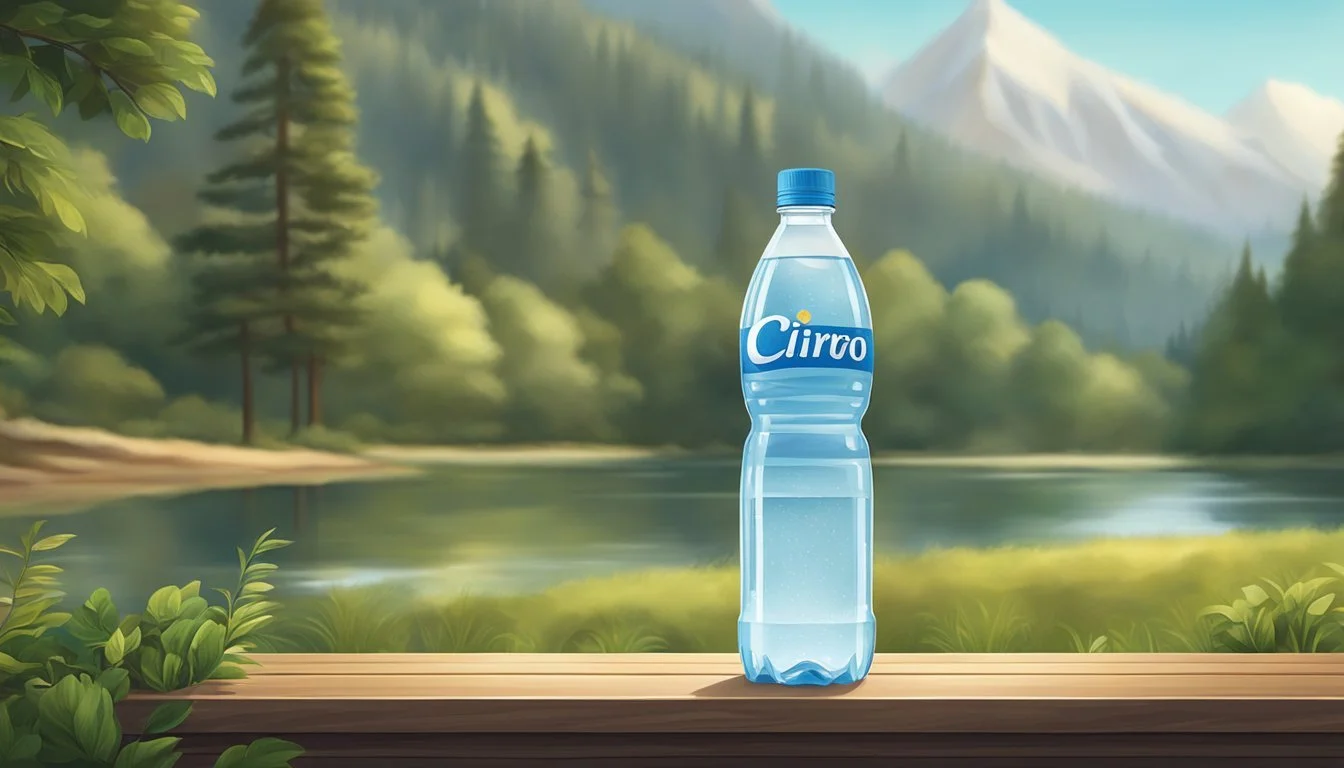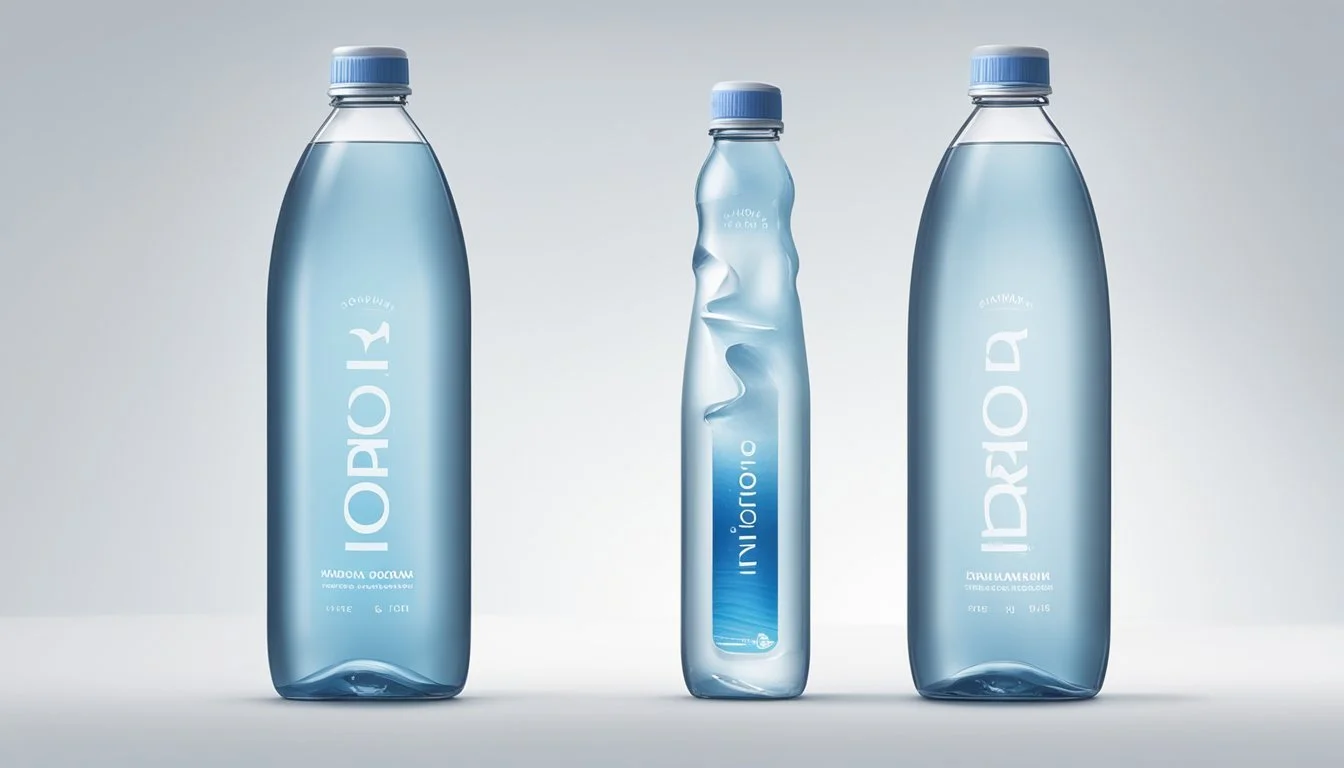Cirro vs. Ramona
Ultimate Bottled Water Comparison
Many consumers are seeking the best bottled water for optimal hydration and health. Cirro and Ramona are two popular choices, each offering unique benefits. Both Cirro and Ramona stand out for their commitment to quality and purity.
Cirro is known for its crisp taste and originates from pristine sources, ensuring every bottle delivers a refreshing experience. Ramona, on the other hand, has gained a loyal following due to its balanced mineral content and smooth finish. For those prioritizing a clean, refreshing taste, Cirro might be the preferred option.
Conversely, Ramona's appeal lies in its subtle mineral richness, making it not just a thirst quencher but also a potential source of essential nutrients. Whether you value a pure, rejuvenating sip or a slightly more nutritious drink, the decision between Cirro and Ramona hinges on your personal hydration and health priorities.
Understanding Bottled Water
Choosing bottled water goes beyond just picking a brand; it involves understanding the types of water available, the significance of water sources, and the processes of filtration and purification.
Types of Bottled Water
Spring Water
Spring water originates from underground formations and flows naturally to the surface. It retains the minerals found at the source.
Mineral Water
Mineral water contains a specific percentage of minerals and trace elements. FDA regulations mandate that these minerals must be naturally present, not artificially added.
Purified Water
Purified water goes through various processes such as distillation, deionization, or reverse osmosis to remove impurities and contaminants, providing high purity.
Artesian Water
Artesian water comes from a confined aquifer, where water is under pressure and naturally rises to the surface.
Groundwater
Groundwater is sourced from a well tapping into an underground aquifer. Like spring water, it contains natural minerals.
Importance of Source
The source of bottled water significantly impacts its taste, mineral content, and overall quality.
Mountain Spring Water
Mountain spring water is collected at high elevations where the water is typically cleaner and contains more natural minerals. This source is often prized for its purity and taste.
Natural Spring Water
Natural spring water is collected from points where water flows naturally to the surface. Its mineral content varies depending on the geographic location of the spring.
Groundwater
Groundwater is extracted from underground sources and is usually rich in minerals. The quality can vary based on the condition of the aquifer and the surrounding geological features.
Filtration and Purity
The filtration and purification processes used in bottled water production ensure safety and enhance taste.
Reverse Osmosis
Reverse osmosis involves forcing water through a semi-permeable membrane to remove impurities and contaminants. This process ensures highly purified water.
Filtration
Bottled water often undergoes several filtration steps, including carbon filtration, which removes chlorine and organic compounds, and microfiltration, which eliminates bacteria and larger particles.
UV Treatment
Ultraviolet (UV) treatment is commonly used to ensure bottled water is free of harmful microorganisms without altering taste or adding chemicals.
Comparative Analysis of Cirro and Ramona
Cirro and Ramona are two prominent brands in the bottled water market, each with unique attributes.
Company Profiles
Cirro is a well-established brand, known for its premium offerings. The company sources its water from mountain springs, ensuring high purity standards. They emphasize sustainable practices and minimal environmental impact.
Ramona is another leading brand that targets health-conscious consumers. The water is extracted from deep aquifers, which are known for their mineral-rich content. Ramona's branding often highlights the natural benefits of its water.
Production Processes
Cirro uses a multi-step filtration process. This includes micro-filtration, reverse osmosis, and UV treatment. These steps are designed to remove impurities while retaining essential minerals. The company also focuses on reduced plastic usage through its eco-friendly bottle designs.
Ramona's production process involves advanced mineral balancing. After initial filtration, the water undergoes mineral re-introduction to achieve optimal taste and health benefits. They also use BPA-free bottles to ensure safety.
Taste Profiles
Cirro offers a clean and crisp taste, attributed to its mountain spring source. The mineral content is balanced, providing a refreshing and neutral flavor profile. Consumers often note the absence of metallic or chemical tastes.
Ramona has a slightly richer taste due to its higher mineral content. The water often includes naturally occurring elements like calcium and magnesium. This gives it a distinct, smooth taste that some consumers prefer for its natural feel.
Composition and Health Benefits
The comparison between Cirro and Ramona bottled waters requires an examination of their mineral content, potential health benefits, and their roles in hydration and replenishment of electrolytes.
Mineral Composition
Cirro:
Calcium: Cirro contains approximately 20 mg/L, beneficial for bone health.
Magnesium: Contains around 10 mg/L, which aids in muscle function.
Potassium: About 5 mg/L, important for heart health.
Sodium: Low sodium content, around 2 mg/L, making it suitable for low-sodium diets.
Ramona:
Calcium: Higher concentration at 35 mg/L.
Magnesium: Around 15 mg/L.
Potassium: Also higher than Cirro, at 8 mg/L.
Sodium: Slightly higher sodium at 4 mg/L but still considered low.
Health Implications
Different mineral compositions can have varied health impacts. Cirro, with its lower calcium and magnesium, might be suitable for individuals with specific dietary restrictions. Ramona, with its higher concentrations, provides more minerals that are crucial for bone health and muscle function.
High magnesium in Ramona supports enzymatic functions and may reduce muscle cramps. Higher potassium levels benefit cardiovascular health by managing blood pressure. Both waters are low in sodium, making them heart-healthy choices.
Hydration and Electrolytes
Electrolytes like sodium, potassium, and magnesium are essential for maintaining the body's fluid balance. Cirro offers balanced hydration with a lighter mineral load, which may be preferred in everyday consumption without risk of excessive mineral intake.
Ramona, with its richer electrolyte content, could be optimal for athletes or those requiring rapid electrolyte replenishment. The presence of potassium and magnesium aids in rehydration and muscle recovery post-exercise. Both brands of water contribute to overall daily hydration while offering varied, specific benefits based on their mineral compositions.
Environmental Impact and Packaging
Choosing between Cirro and Ramona involves considering their environmental impact and packaging. Cirro primarily uses plastic bottles, while Ramona opts for glass.
Plastic vs Glass Bottles
Plastic bottles, used by Cirro, are less environmentally friendly compared to glass. They generate significant CO2 emissions during production. For instance, the production of 50 ounces of bottled water can emit between 1.6 and 22 ounces of CO2. Additionally, the disposal and recycling issues with plastic bottles contribute to pollution.
Ramona's glass bottles, on the other hand, offer a more sustainable option. Glass is 100% recyclable and can be reused repeatedly without loss of quality. Although the production of glass bottles requires more energy, their long-term recyclability and lower ecological footprint often offset initial environmental costs.
Sustainability Efforts
Cirro has initiated measures to reduce its environmental impact. They have started incorporating recycled materials into their plastic bottles and optimizing logistics to reduce carbon emissions. Additionally, they encourage consumers to use reusable bottles to decrease plastic waste.
Ramona has made sustainability a core part of its brand. They take steps to minimize energy consumption in their production process and actively engage in bottle return programs. Ramona also educates consumers about the benefits of glass bottles and sustainable water consumption practices.
Tasting and Experience
When comparing Cirro and Ramona, the tasting experience and how they pair with foods offer valuable insights. Understanding the sensory characteristics and the guidance from experts can enhance the overall evaluation of these bottled water brands.
Guidance from Water Sommeliers
Water sommeliers analyze the taste profile, aroma, and mouthfeel of bottled water.
Cirro is often praised for its clean and crisp taste, featuring a slight mineral touch that adds complexity without overpowering.
Ramona, in contrast, exhibits a smooth texture and a mild sweetness that some find refreshing.
The unique mineral content of each brand plays a crucial role: Cirro's water offers minerals like magnesium and calcium, lending a subtle yet distinct flavor, whereas Ramona’s composition leans towards lower mineral content, making it taste lighter.
Pairing Water with Foods
Pairing bottled water with food enhances the dining experience.
Cirro pairs well with savory dishes due to its slight mineral aftertaste. This can complement rich foods such as grilled meats or hearty stews.
Ramona’s mild sweetness and light body make it an excellent accompaniment to delicate dishes like sushi or light salads.
The neutral profile of Ramona ensures it doesn't overshadow the flavors of subtle dishes, while Cirro's robustness can stand up to more intense flavors.
Understanding these nuances helps in choosing the right water to match the meal, enhancing both the water and the food.
Consumer Considerations
When choosing between Cirro and Ramona bottled water, consumers often look at factors such as how easy it is to find, and the cost.
Availability and Convenience
Cirro and Ramona bottled water are available at numerous grocery stores and online platforms. Cirro, being a popular brand, is often stocked in major retail chains and small convenience stores alike. This widespread availability makes it a convenient choice for many consumers.
Ramona, on the other hand, has a more selective distribution network. It is often found in specialty stores and high-end supermarkets. This can make it harder to find for some consumers, but those who prefer premium stores may find it readily available.
For consumers who prioritize convenience, Cirro might be the better choice due to its extensive presence in a variety of retail locations.
Price Comparison
Price plays a crucial role in choosing bottled water. Cirro is known for its moderate price tag, making it accessible for daily consumption without feeling like an expensive water option. This makes it an attractive option for those looking to balance quality and cost.
Ramona is typically priced higher, positioning itself as a premium brand. The higher price tag reflects its marketing as a luxury item. For those willing to spend more on higher-end products, Ramona could be appealing.
Both brands cater to different segments of the market, with Cirro appealing to budget-conscious consumers and Ramona targeting those looking for a upscale experience. When considering price, the consumer's budget and preference for either an inexpensive or premium product are key factors.






